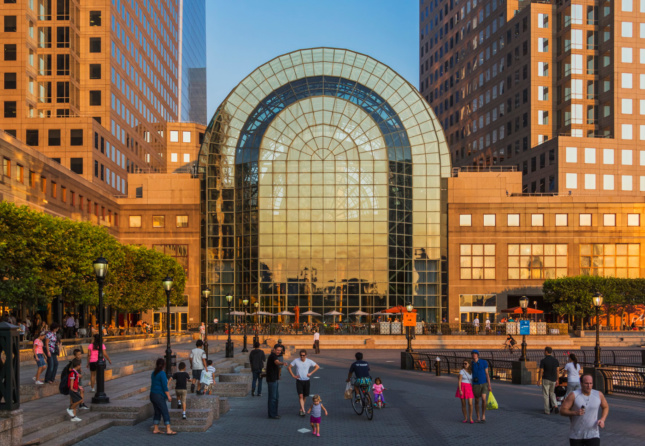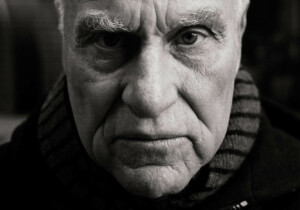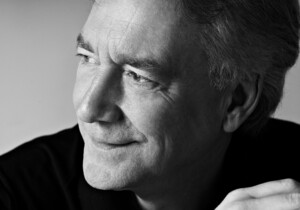The death of César Pelli at 92 on July 19 marked the end of an era. Yet the firm he headed with Fred Clarke and his son Rafael Pelli continues, with dozens of important and innovative projects underway.
Pelli’s modest demeanor belied the fact that he and his partners designed over 300 buildings and 68 unrealized or theoretical projects. The best known built works are the Petronas Towers in Kuala Lumpur (briefly the tallest buildings in the world), the colorful glass-skinned Pacific Design Center in Los Angeles, the complex Cleveland Clinic, the American Embassy in Tokyo, and the recent Salesforce Tower and Transit Center in San Francisco (the tallest building there). In New York, they built the 1977-84 addition to the Museum of Modern Art and its residential tower, the World Financial Center—now dubbed Brookfield Place—in Battery Park City, the unusually contextual Carnegie Hall Tower, the Theodore Roosevelt Federal Building in downtown Brooklyn, and the pioneeringly energy-efficient Verdesian apartment building in Battery Park City, along with numerous other buildings that fit into their surroundings so well that they are not easily recognized.

An office building for Trinity Church on Wall Street, the Yale Biology Building, the one-million-square-foot Bulfinch Crossing in Boston, a Natural History Museum in Chengdu, China, the Google Tower in Austin, Texas, and 3.3-million-square-foot Union Park in Toronto are among dozens of buildings underway now.
Given the size of the practice, the complexity of its projects, their international range, size, scale, and sensitivity to place, it is surprising that the work of Pelli Clark Pelli has not received more critical attention. It is not something the partners sought. Doing innovative work and treating colleagues well has always been the firm’s priorities.
César Pelli was one of architecture’s real artists and intellectuals.
He was born in the medium-sized city of San Miguel de Tucumán, Argentina, where one of the most innovative architecture schools in the world opened just before he matriculated. His father, Victor Pelli, was an innovative tinkerer who loved to make things. His mother. Theresa Pelli was a professor at Resistencia, who taught alongside the mother of the woman César would eventually marry, Diana Balmori.

They got to know one another in architecture school, and then applied to various graduate programs together around the world. They ended up moving to the United States, where César earned a Master’s degree at the University of Illinois. It was not easy. Other young Argentinians they knew soon returned home. Diana once told me that they sold their wedding presents to make ends meet, but that fact that she spoke excellent English helped. Then, César’s professor recommended that he join the very busy office of Eero Saarinen in Bloomfield Hills, Michigan. That move was not easy for Diana either, who had two young sons, but it was there, on the lush Cranbrook campus, that she developed an interest in landscape design.
Saarinen’s office, enriched by the opportunity to design the $100 million, 320-acre General Motors Design Center, had attracted talented young architects from all over the world. César soon became the one Saarinen trusted with some of his most challenging projects.

The firm was thriving with numerous enticing commissions. Eero had recently remarried journalist and architecture critic Aline Bernstein Saarinen, who wanted to move to the East Coast where her career, and increasingly Eero’s, was centered. Lonely in Michigan, she often invited the Pellis to join them for lunch.
But soon after the birth of their son Eames, Eero developed a brain tumor and died within days. The firm moved to New Haven as planned to finish his work. César was in charge of two of the most challenging projects: the proto-postmodern Morse and Ezra Stiles Colleges at Yale, which imaginatively acknowledged Gothic Revival buildings nearby, and the TWA Terminal at JFK (then Idlewild) Airport in New York, which has now been restored and turned into the centerpiece of a new hotel.
When Saarinen’s work was completed, some associates formed a successor firm, Kevin Roche John Dinkeloo and Partners, but the Pellis instead moved to the booming Los Angeles.

César went to work first for the pragmatic commercial firm, Daniel, Mann, Johnson & Mendenhall from 1965 through 1968, then to Gruen Associates from 1968 through 1976, often collaborating with young talented international architects he had known at the Saarinen firm, such as Anthony J. Lumsden.
By the mid-70s, Pelli, who had been teaching part-time at UCLA, decided he would like to work in architectural education. He was offered deanships at UCLA, Harvard, and Yale, that last being where he moved in 1977 and had been living ever since. Soon he was invited to expand the Museum of Modern Art in Manhattan, so he opened the original Cesar Pelli & Associates office in New Haven, which continued to grow after he stepped down as Yale dean in 1984, but which still operates on an open-minded academic model.

Over the years, Pelli worked on and off with Balmori, who herself developed an innovative practice in landscape design. She died in 2016. César Pelli is survived by sons Rafael and Denis, as well as dozens of colleagues, friends, clients, former students, and admirers. His legacy is enormous.











